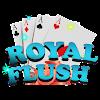Using crops to craft artisan goods is a lucrative way to boost your earnings in Stardew Valley. While it's true that advanced setups for producing Jelly and Wine are typically seen at higher levels, Preserves Jars are accessible early in the game, offering a significant advantage even to low-level players.
Preserves Jars are incredibly versatile, allowing players to create a range of artisan goods that can substantially increase their profits from fruits, vegetables, and other foraged items. They're also crucial for making Fish Ponds more profitable. Here's a comprehensive guide on how Preserves Jars work and their benefits in Stardew Valley.
Updated January 11, 2025, by Demaris Oxman: The 1.6 update introduced exciting new possibilities for farmers, allowing a wide array of foraged items—from the common Dandelion to the rare Purple Mushroom—to be pickled in Preserves Jars, enhancing their value. This guide has been updated to cover all the new ways to utilize this essential farm item.
Where To Get Preserves Jars In Stardew Valley
 To craft a Preserves Jar, you need to reach Farming Level 4, after which you can use the following materials:
To craft a Preserves Jar, you need to reach Farming Level 4, after which you can use the following materials:
- 50 Wood
- 40 Stone
- 8 Coal
These materials are readily available, making the Preserves Jar an excellent choice for players eager to produce artisan goods quickly. Wood comes from chopping trees, Stone from breaking rocks with a pickaxe, and Coal can be mined or obtained by defeating dust sprites in the Mines.
In addition to crafting, players can earn a Preserves Jar by completing the Quality Crops Bundle (or Rare Crops Bundle if remixed) at the Community Center. They might also win one from the Prize Machine in Mayor Lewis' house.
What Are Preserves Jars Used For In Stardew Valley?
 Preserves Jars transform a variety of items into artisan goods, each with its own selling price and processing time. If you choose the Artisan profession at Farming Level 10, you'll enjoy a 40% increase in the sale price of these items.
Preserves Jars transform a variety of items into artisan goods, each with its own selling price and processing time. If you choose the Artisan profession at Farming Level 10, you'll enjoy a 40% increase in the sale price of these items.
| Item | Product | Sell Price | Health/Energy | Processing Time |
|---|---|---|---|---|
| Fruit |  Jelly Jelly | 2x (base fruit value) + 50 | For edible fruit: 2x base fruit energy, 2x base fruit health. For inedible fruit (e.g., Coconut): Health: 0.5x base fruit value, Energy: 0.225 base fruit value | 2-3 in-game days |
| Vegetable, Mushroom, or Forage |  Pickles Pickles | 2x (base item value) + 50 | For edible items: 1.75x base item energy, 1.75x base item health. For inedible items (e.g., Pumpkin): Energy: 0.625x base item value, Health: 0.28125 base item value | 2-3 in-game days |
| Sturgeon Roe |  Caviar Caviar | 500g | 175 Energy, 78 Health | 4 in-game days |
| Any Other Fish Roe |  Aged Roe Aged Roe | 60 + (base fish price) | 100 Energy, 45 Health | 2-3 in-game days |
Only Mushrooms and Forage items that provide positive energy when eaten, such as Chanterelle or Winter Root, can be pickled. Poisonous items like Red Mushroom and Holly cannot be processed in a Preserves Jar.
The sell price of artisan goods produced in Preserves Jars is based on the base value of the input item, not its quality. Therefore, using lower-quality produce in the jars maximizes profit increases.
Preserves Jars or Kegs?
 When comparing Preserves Jars to Kegs, it's important to consider the types of produce used. Preserves Jars are most profitable for fruits valued under 50g and vegetables/forage items under 160g. They also process goods much faster than Kegs. High-yield, low-value crops like Eggplants, wild berries, Corn, and Tomatoes are ideal for turning into Jelly and Pickles.
When comparing Preserves Jars to Kegs, it's important to consider the types of produce used. Preserves Jars are most profitable for fruits valued under 50g and vegetables/forage items under 160g. They also process goods much faster than Kegs. High-yield, low-value crops like Eggplants, wild berries, Corn, and Tomatoes are ideal for turning into Jelly and Pickles.
Preserves Jars are uniquely suited for processing Fish Roe, making them indispensable for Fish Pond setups. Mushrooms, which can't be used in Kegs, also benefit from being pickled in Preserves Jars, typically yielding a higher profit margin than the Dehydrator.
By understanding and utilizing Preserves Jars effectively, players can significantly enhance their Stardew Valley farming experience and profitability.









